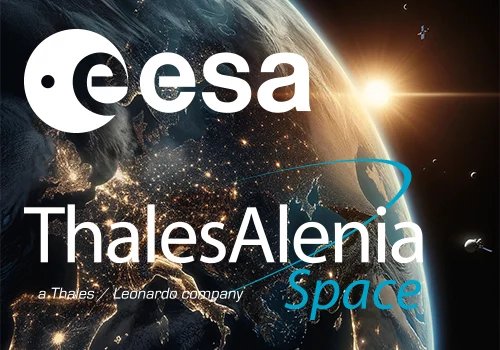LEO-PNT Project: Enhancing Future Navigation
This new commercial success for Syntony in LEO PNT comes after the partnership between Xona Space Systems and Syntony allowing Syntony to develop and demonstrate at ION GNSS the first-ever LEO PNT receivers and simulators (refer to our Press Release for more details).
Led by Thales Alenia Space and funded by ESA, the first European LEO-PNT project aims to enhance Positioning, Navigation, and Timing (PNT) services from Low Earth Orbit (LEO). This initiative is expected to improve the accuracy and reliability of navigation systems, serving a wide range of applications, from critical emergency services to everyday technological conveniences (see Thales Alenia Space Press Release here).
Syntony’s Strategic Role
In this consortium, Syntony is tasked with providing ground receivers that are compatible with the new LEO/PNT signals, as well as with GPS and Galileo systems. These receivers will initially assess the performance of signals from the constellation, which will start with fewer than 10 satellites (versus 100 to 600 satellites when the constellation is complete).
Although these receivers will not always be able to calculate their Position, Velocity, and Time (PVT) due to the lack of available satellites, they will be crucial in evaluating signal performance when at least four satellites are visible, which allows PVT calculations and performance comparisons with existing GNSS systems.
Commitment to the LEO-PNT Mission with SDR Technology
The core of Syntony’s Software-Defined Radio (SDR) receivers offers essential flexibility and adaptability for this initiative. Syntony’s SDR receivers enable real-time adjustments to the receiver settings to evaluate the constellation’s performance. This can be achieved without any hardware changes, as the LEO-PNT constellation utilizes frequencies similar to those used by the Medium Earth Orbit (MEO) GNSS systems.
In complement, the Constellator GNSS Simulator will be updated to incorporate the constellation’s signals as soon as they are available. This process is similar to how the signals from Xona Space Systems’ PULSAR constellation were integrated as early as 2022.
Progressing Towards Advanced Global Navigation
The LEO-PNT project represents a significant step towards the next generation of global navigation services. Syntony is central to this development, and its involvement not only demonstrates its technical capabilities but also aligns with its mission to support impactful, global projects. Together with Thales Alenia Space, ESA, and other consortium members, Syntony is dedicated to the ongoing development and potential of the LEO-PNT initiative.
As technology advances rapidly, Syntony is committed to maintaining high standards of innovation and quality. The company’s participation in the LEO-PNT project underscores its role in driving the evolution of global navigation and positioning technologies.
